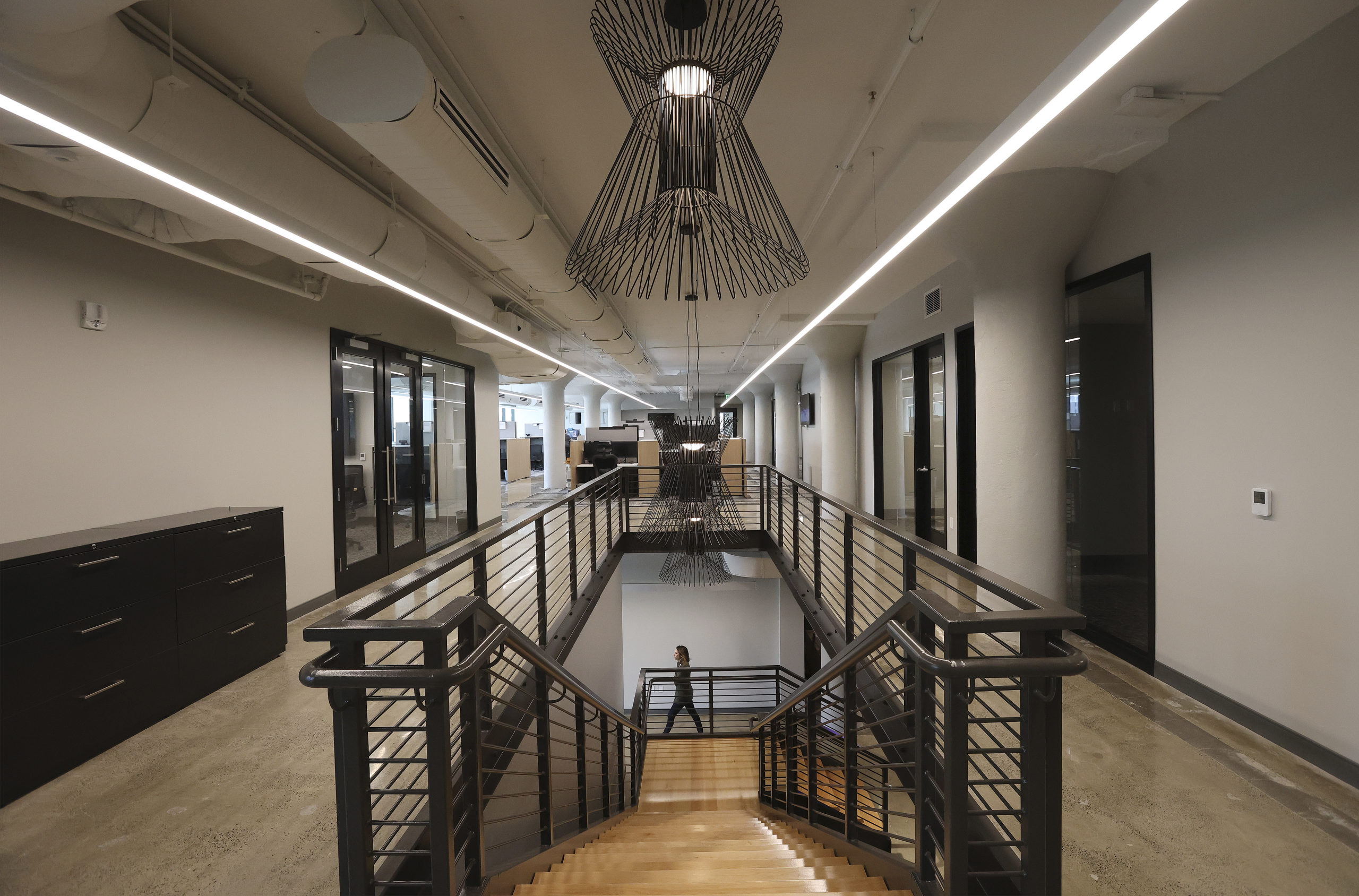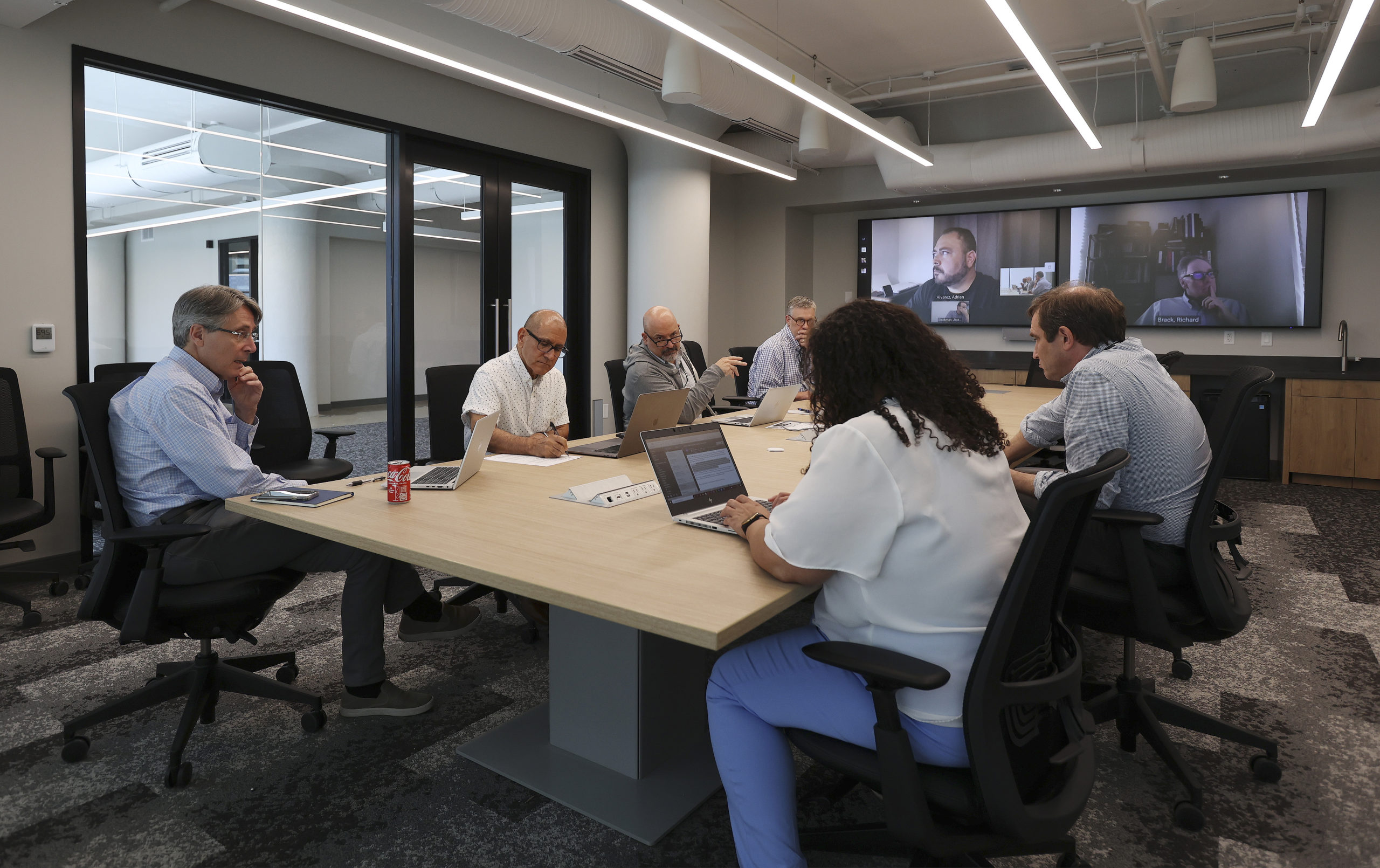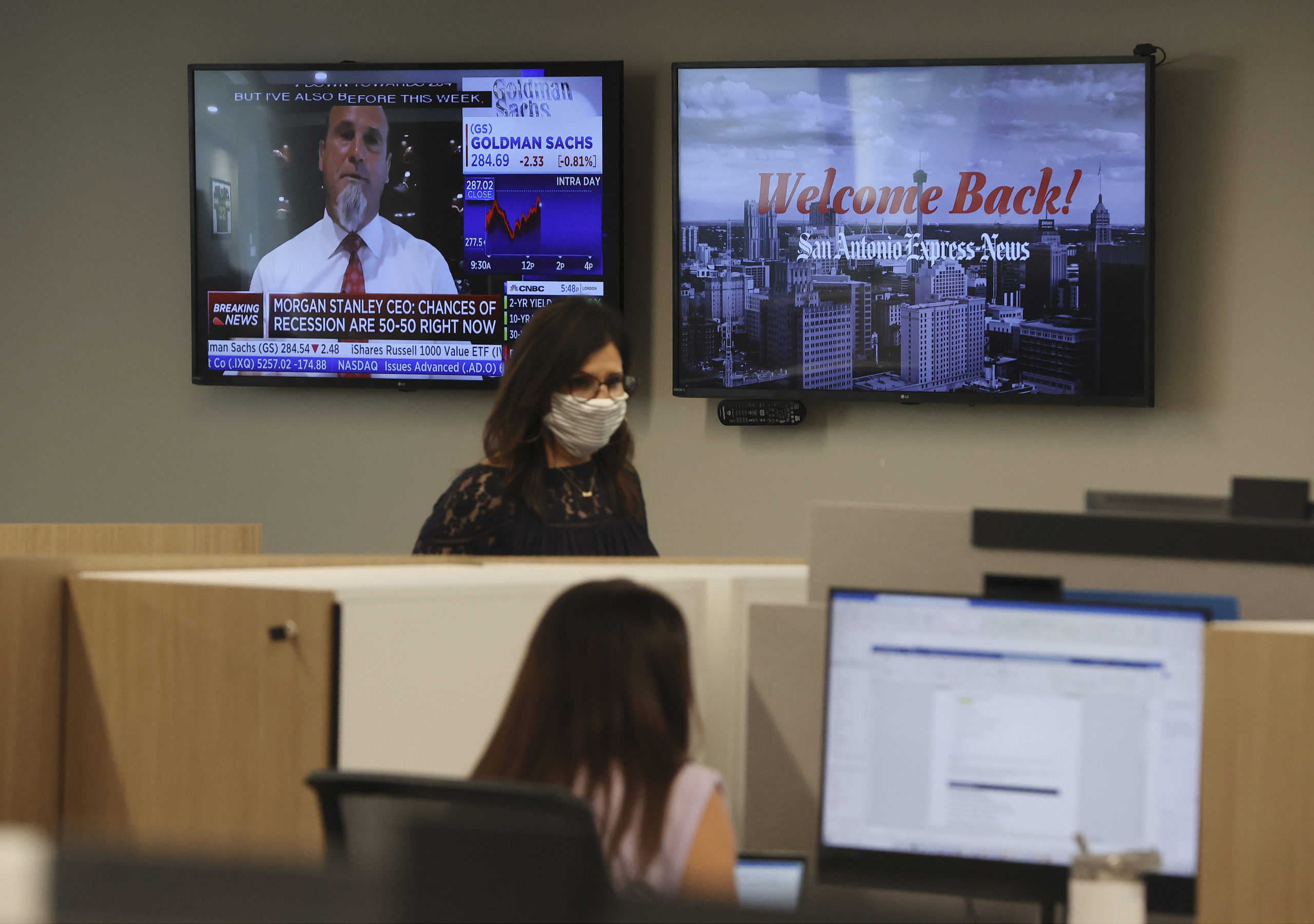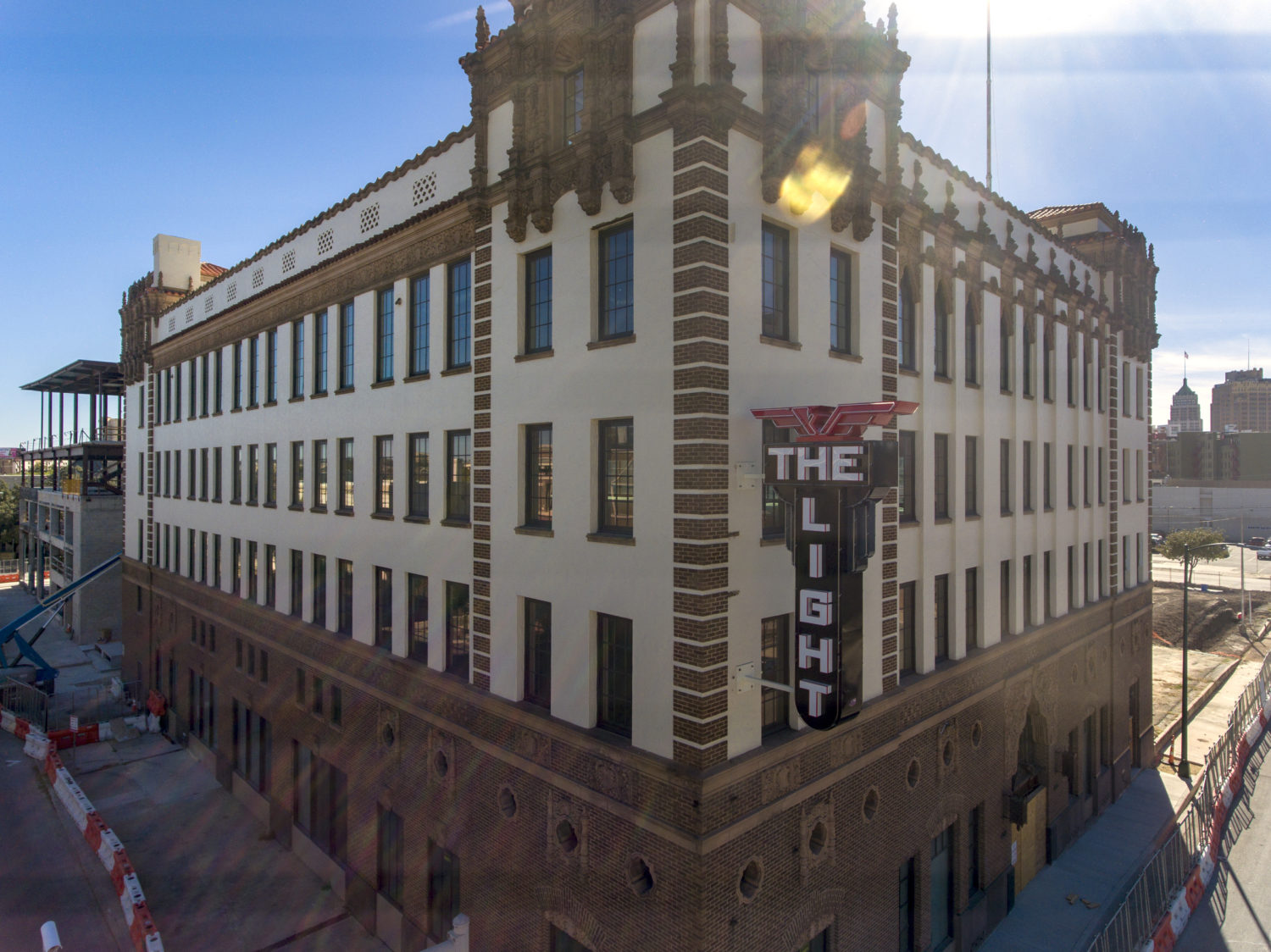After being forced out of the office by a historic pandemic, journalists have slowly been trickling back into newsrooms for the past year. But for the reporters at the San Antonio Express-News, there was nowhere to go.
Until this month. The staff at the Hearst-owned newspaper officially moved into a new building last week after more than two years of remote work — including a period during which the paper was “newsroom-less.”
Like dozens of newspapers, the Express-News sold its historic building in downtown San Antonio during the pandemic. But unlike some of those other papers, the Express-News’ plans predated the global crisis. Hearst listed the building for sale in 2019, telling staff that they would eventually move to another downtown property.
“The old Express-News building — I think it goes back to the 1930s — was larger, had a lot of floors that were vacant,” editor-in-chief Marc Duvoisin said. “The HVAC and the other building systems were very antiquated, and it was expensive to maintain it and to be there.”
The Express-News now takes up two floors in the Light building, just one block away from its old headquarters. The new property also has a history steeped in journalism. It used to house the San Antonio Light newspaper, which Hearst bought in 1924 and closed in 1993.
True to its name, the new space has a lot of natural light thanks to its many windows — a feature several journalists raved about. While the old building had “character,” it also occasionally had bats, health care reporter Laura Garcia said. Departments were siloed so that she rarely saw advertising or marketing staff, and the parking situation meant reporters had to walk several blocks to the office. The old newsroom also had heating and cooling issues, a windowless conference room and water stains on the ceiling, executive editor Nora López said. There were complaints about mold.
“So coming into this new space, where everything was very light and airy, and it was very open with lots of sunlight and these really nice modern desks and desktops and our new podcasting studio, and all this sort of stuff — just walking in, it felt like night and day,” breaking news reporter Taylor Pettaway said. “It was so gorgeous. I absolutely loved it.”

“In the old building, things were pretty siloed. I never ever met anybody who was working in advertising or marketing. I never saw them. I had no reason to interact with them,” reporter Laura Garcia said. “And now in this new building, just the way the layout is, we share the same stairway, and it’s a lot more open. The floor plan is more open.” (San Antonio Express-News/Kin Man Hui)
Editors and other leaders were invited back a week early to get their building passes and make sure their equipment worked. Seeing everyone again felt like a “family reunion,” Pettaway said. As more reporters started to come in, some compared the giddy energy to the anticipation that precedes a new school year.
“We’re all like kids on the first day of school, just doing ‘oohing’ and ‘ahhing’ over everything, and asking each other, ‘Did you see the Starbucks coffee (machine)?’” López said. “It’s the little things that I think get us all worked up because we didn’t have that in our old building.”
Remote work policies during the pandemic have given both companies and employees more flexibility. Over the past two years, large newspaper chains including McClatchy and Tribune have sold several of their buildings to cut costs. Some of those papers still lack a physical office space.
Though working from home eliminated a 30-minute commute and was sometimes beneficial for her mental health, Garcia said it also posed challenges, especially once the paper lost its newsroom. When she had to cover meetings in downtown San Antonio, she struggled to find places where she could write and file stories. Garcia sometimes had to ask coworkers who lived in the area if she could use their Wi-Fi or park outside of a Starbucks and write while sitting in her car.
“I’m so glad that we have a home base now,” she said.
Garcia, who is the president of the San Antonio Association of Hispanic Journalists, said her organization now also has a place where they can hold meetings. For the past two years, they had to either meet virtually or convene in locations, like coffee shops, that did not allow virtual participants.

The old Express-News conference room was a “hole in the wall that had no windows,” executive editor Nora López said. The new one has three glass walls and screens that allow people to join meetings virtually. (San Antonio Express-News/Kin Man Hui)
Working in person allows for easier communication and collaboration, Duvoisin said. In a newsroom, he can call out to people and communicate with a hand gesture or facial expression. Spontaneous conversations can erupt by the coffee maker or in the hallway. If he wanted to have a conversation with someone while working remotely, he needed to set up a phone or video call
“It was hard, and it was emotionally exhausting communicating through these cumbersome mechanisms and procedures.” Duvoisin said. “It’s so much easier to do the work when you’re in physical proximity. Creative things just happen faster, and there’s the opportunity for people to overhear your conversation and chime in, ‘You know, I heard you guys and I think …,’ or ‘Oh, why don’t you try it this way?’”
Annie Blanks, a Report for America fellow who covers the city of San Marcos, said she has found it “10 times easier” to do journalism from a newsroom.
“(There’s) something about being in a newsroom, you know, with newspapers everywhere and there’s TV screens with news stuff on them,” Blanks said. “It’s kind of like being in the cockpit of an airplane, as opposed to being in a simulator. A simulator’s like working from home, but being in the newsroom is like being back in the cockpit.”

San Antonio Express-News staff officially returned to the office on June 6. The paper had sold its old building during the pandemic, and staff worked remotely for more than two years. (San Antonio Express-News/Kin Man Hui)
The Express-News is operating under a hybrid work schedule, and reporters said they have a lot of flexibility in deciding when they come in. Hearst’s expectation is to eventually have reporters in the office two to three days a week, Duvoisin said. The paper is still in a “transitional stage” as it determines how many permanent workstations will be needed. Reporters and photographers have spent the past few weeks shuttling back and forth between San Antonio and Uvalde to cover the tragedy there, so the newsroom has still been relatively quiet.
“I think journalists have gotten used to working in inferior physical conditions and we romanticized it — it was fun. We told ourselves that was part of the ethos of being a journalist.” said Duvoisin, who has worked as a journalist for over 30 years. “I’ve made the transition from having once romanticized the rundown, crummy newsrooms of old. I really enjoy being in a nice new one.”
“It’s a vote of confidence by the company in the future of the newspaper.”
Poynter contributor Amaris Castillo contributed reporting.
More from Poynter:
- San Antonio Express-News editor Nora López talks about her newsroom’s struggle against authorities to tell the stories of Uvalde
- Tribune Publishing is closing some physical newsrooms, including the Capital Gazette
- Seven news outlets in the McClatchy chain will move out of their offices for the rest of the year
- We love the flexibility of working from home. We miss the humans.







